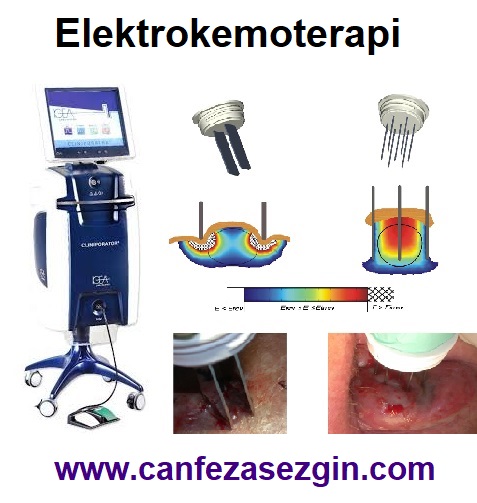
Electrochemotherapy: A Low-Side-Effect Treatment for Cancer
Cancerous tumors located in the dermal and subdermal tissue that are too large or widespread to remove surgically present significant challenges for treatment. While radiation therapy can be effective for these tumors, the chances of success are low. Advances in technology have made a significant impact on treating these complex diseases. One such method is electrochemotherapy.
What is Electrochemotherapy?
Electrochemotherapy is a medical treatment method that makes it easier for cancer cells to take up chemotherapy drugs directly. Electrochemotherapy (ECT) is a combination of two different methods (chemotherapy and electroporation to target and kill cancer cells):
- First, an anti-cancer chemotherapy drug is given directly into the cancer mass or the bloodstream
- The second step in electrochemotherapy is applying an electric shock to increase the uptake of chemotherapy drugs by cancer cells.
A special probe is used to apply an electric shock directly to the cancer mass. The electric shock changes the structure of the outer membrane or "shell" of the cancer cell, creating holes in the cell membrane. This structural change is called electroporation. It increases the amount of chemotherapy drugs that can enter the cancer cell, thus increasing the anti-cancer effect.
In which cancer treatments is electrochemotherapy helpful?
Electrochemotherapy is particularly used in the treatment of cancers that affect the skin or spread to the soft tissues under the skin (1, 2).
What types of cancer can be treated with electrochemotherapy?
Electrochemotherapy is used to treat cancers that originate in the skin or have metastasized to the skin from other areas of the body, such as:
Basal cell and squamous cell skin cancer
- The aggressive type of malignant melanoma
- Kaposi's sarcoma
- Skin metastases from breast cancer
- Skin metastases from head and neck cancers
- Soft tissue sarcomas
Administration of Chemotherapy:
- Intratumoral injection: is a method of administering chemotherapy directly into a tumor.
- Intravenous (IV): Chemotherapy is injected into a vein.
The chemotherapy drugs used are typically cisplatin or bleomycin. The doses of chemotherapy drugs are usually much lower than those used in cancer treatment and have fewer side effects. This is because the electric shock helps the chemotherapy drug to pass through the cancer cell membrane more easily by creating holes in the cell membrane (1, 2). This means lower doses of chemotherapy and fewer side effects.
The amount of electric current to be applied depends on the number or size of the cancer mass. The procedure is performed with local or general anesthesia to ensure a painless experience.
If you are treating a series of tumors, you may need to undergo general anesthesia.
The electric shock comes from a specially developed device to which a probe the size of a pen is attached. On the tip of the probe, there is an electrode that delivers the electric shock directly to the cancer mass when it comes into contact with it.
The duration of treatment varies from 10 to 60 minutes, depending on the quantity and size of the cancerous masses.
What is the success rate of electrochemotherapy?
A scientific study involving 376 patients reported that in half of the patients, the cancer masses completely disappeared after 60 days, and a large majority (88%) of patients had a good response (3).
What are the side effects of electrochemotherapy?
The most common side effect is pain at the site where the electrode comes into contact with the skin. The pain is usually mild and lasts for a few days. Painkillers are used if necessary. Some patients may experience muscle contractions during the treatment, which can be prevented by changing the way the treatment is administered. Muscular contractions may occasionally impact breathing, in such cases, supplementary medical intervention may be necessary. In a small number of patients bleeding or wound infection may develop.
Particularly in tumors located in the head and neck region, depending on the size, during the procedure, difficulty in breathing may occur, and it may be necessary to open the airway (tracheostomy) in the laryngeal area.
Rarely, life-threatening risks and death risks may develop.
Reference:
- Probst U, Fuhrmann I, Beyer L, Wiggermann P. Electrochemotherapy as a New Modality in Interventional Oncology: A Review. Technol Cancer Res Treat. 2018;17:1533033818785329.
- https://www.cancerresearchuk.org/about-cancer/cancer-in-general/treatment/other/photodynamic-therapy
- Campana LG, et al. Treatment efficacy with electrochemotherapy: A multi-institutional prospective observational study on 376 patients with superficial tumors. European Journal of Surgical Oncology 2016; 42(12): 1914-1923.


